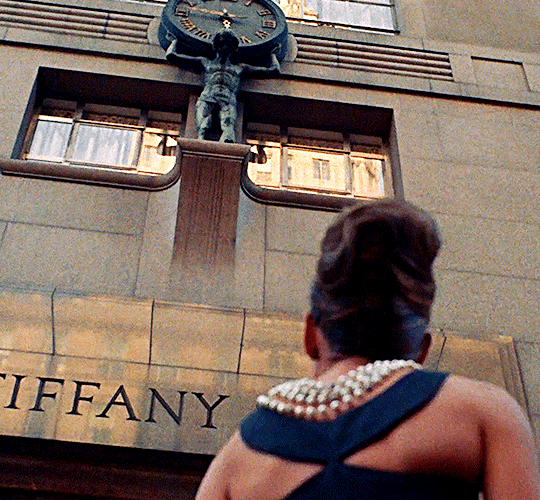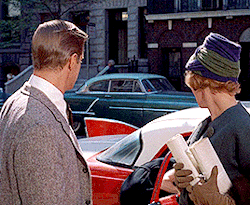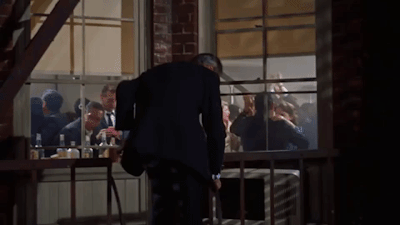Five Questions I Had Watching...Breakfast at Tiffany's
Darlings, this iconic movie was released on this day 61 years ago, so let's rewatch the film Audrey Hepburn is most famously known for!
1. Did Audrey Hepburn and George Peppard get along?
Reading about George Peppard and how he got along with his co-stars, I get the sense that he had an inflated sense of self relative to the people around him, and is one of the reasons why people roll their eyes when they hear an actor is a Method actor.
According to an interview Richard Shepherd, one of the film's producers, did, Audrey did not find him personable or charming. "I must say there wasn't a human being that Audrey Hepburn didn't have a kind word for, except for George Peppard. She didn't like him at all. She thought he was pompous."
For his part, he'd call Audrey the Happy Nun behind her back as a way to mock her most recently acclaimed role in The Nun's Story.
Whether time or politeness changed his attitude, by the time Audrey was being honoured with the Cecil B. DeMille Award at the 1990 Golden Globes, George was on hand to pay his respects (though the job of formally honouring her was delegated to Gregory Peck):
"I've had some great good luck several times in my career. One of those times was when Paramount wanted me to do Breakfast at Tiffany's. It was brilliantly directed by Blake Edwards. Beautifully photographed by Franz Planer. Hauntingly scored by Henry Mancini, and I played opposite one of the screen's most luminous and beautiful stars, Miss Audrey Hepburn. You're looking great, kid."
2. Was Breakfast at Tiffany's filmed in New York City?
For a film that really flies the flag for New York City, yes, it was filmed there. Well, the exteriors were, anyways. All interiors (except for Tiffany & Co.) were filmed in a Los Angeles soundstage.
I once wrote a blog post called 'Inside Holly Golightly's Apartment' and raved about its interiors, but did you know that you can stay in the actual townhouse? It's a luxury rental property called The Hepburn, and its prices aren't even listed, that's how bougie it is. It also references "an iconic 1961 film" so I wonder if, for copyright reasons, they can't name it? It sold in 2014 for $7.4 million.
It's a 1910 brownstone on the Upper East Side, only six blocks away from Central Park. I wonder how much the rent cost in 1961?
3. Did Breakfast at Tiffany's revive Buddy Ebsen's career?
Prior to Breakfast at Tiffany's, Buddy Ebsen's career had plateaued. He'd been set to play the Tin Man in The Wizard of Oz, but when he had a reaction to the aluminum face paint, he was replaced by Jack Haley, and his career waned. He appeared in musicals and movies throughout the '40s, and also served in the US Coast Guard during the war.
After the war ended, he returned to Hollywood but his career never really recovered. He appeared steadily on television and in bit movie parts, but when Blake Edwards called him up to play Doc Golightly, he was the only one on the production side who actually believed Buddy was up for the part.
According to Sam Wasson's excellent book, Fifth Avenue, 5 A.M.: Audrey Hepburn, Breakfast at Tiffany's, and the Dawn of the Modern Woman, he bet Buddy a case of champagne that he'd score an Oscar nomination for the role (which sadly, never happened).
And because he'd been such an effective actor in his relatively brief role, producers started looking at Buddy more seriously, leading to his role as Jed Clampett on The Beverly Hillbillies, the work he's most renowned for to this day.
4. What about Patricia Neal? Did George Peppard get along with her?
Nope. And they'd known each other before making Breakfast at Tiffany's, through the Actors Studio, and had liked each other. But Patricia Neal would say that something had changed with George in the time between their studio days and Breakfast at Tiffany's.
"I was thrilled when I heard we were going to be in it together, but it wasn't long until I saw that since I last saw him he had grown so cold and conceited," she say. And she thinks he had something to do with the changes to her part.
"He didn't want my character," 2E, the society maven who 'keeps' Paul, "to make his character look bad. My character was dominant, you know, and before George got to the script, I had a really excellent part, but he didn't want that, so he fought to have my dialogue cut, cut, cut. Much of it he actually managed to get cut because Blake had not choice but to give in, but luckily he didn't get away with all of it."
For what my opinion's worth, I think it says something that Audrey and Patricia are both cited as among the most talented actresses who ever existed, while we only know George Peppard from one movie.
5. How did the infamously lively party scene come about?
First, can we all appreciate that Holly snitches on her own party?
Anyways, this party scene took a full week to film because Blake Edwards, with his infinite capacity for comedy and hijinks, kept adding to it and made sure each featured character had a full story to communicate. There's the couple arguing before the man lifts up his eye patch; the woman standing in front of a mirror laughing at herself then beginning to sob so much that mascara runs down her cheeks; the woman who keeps trying to dance with Paul Varjak as he's trying to escape...you could watch this scene a million times and find something new to focus on each time.
Each party goer was a real actor who was paid $125 per day for their services; and the production costs reportedly ran up to a $20,000 bill, but Blake Edwards didn't care because he wanted the realism.
__
Leave a comment if you or someone you knew had a Breakfast at Tiffany's poster in their teenage bedroom or college dorm! Me? Guilty as charged!






Comments
Post a Comment